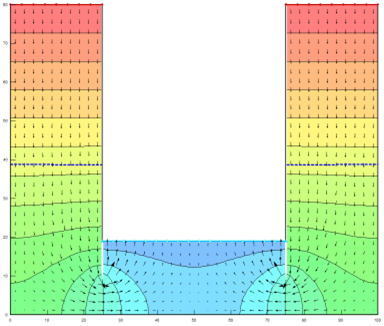The objective of a Dewatering Design is to get to a position where a range of drawdown profile, flow rates and sensitivity analysis are generated to an accuracy that allows further engineering assessments to be made. Judgement is then made in the proposal of the most appropriate Dewatering Methods, number of wells or wellpoint spacing, depths and pumping requirements.
Stuart Wells offer a free dewatering design service as part of our quotation and proposals package. Please contact us to discuss any dewatering requirements or groundwater issues you have.
Stuart Wells have an in-house design team comprising of experienced and qualified people with skills encompassing Hydrogeology, Geology, Civil Engineering and Geochemistry. We have a range of modelling techniques including flow net analysis and numerical frameworks.
Our design ability allows us to be confident to undertake subsequent Dewatering works under subcontract term and conditions, with the cost of design absorbed within our quotation rates.
Information required to undertake a Dewatering Design
- Ground & Groundwater Conditions
- Works Dimensions including Excavation Depth
- Construction Method
- Site Environment
- Discharge Point
Dewatering Design Methods
An initial Dewatering Design assessment is made using variations of Dupuit equations for unconfined and confined aquifers with radial or plane flow conditions.

Accurate Permeability (k) assessment is critical. Commonly this is derived from a relevant PSD Curve within the SI documentation. From this Hazen’s Formula k=C(D10)2 can be used to give a broad assessment. An alternative is to use Prugh Method – Uniform Coefficient (U=D60/D10) with relative Soil Density. Another sensitive factor is the assessment of radius of influence, which needs to be adjusted within the time framework of the Dewatering operation.
Alternatively undertaking a Pumping Test can produce reliable data on permeability and boundary conditions. Permeability Testing and Packer Testing can generate accurate in-situ permeability data.
Where construction includes a cut-off be it sheet piles, secant piles contiguous piles or diaphragm wall etc. Flow Net Analysis is better suited.
This involves construction of idealised flow lines and radial lines of equal head (equipotential) that in conjunction with permeability and boundary conditions can estimate steady state flow conditions.